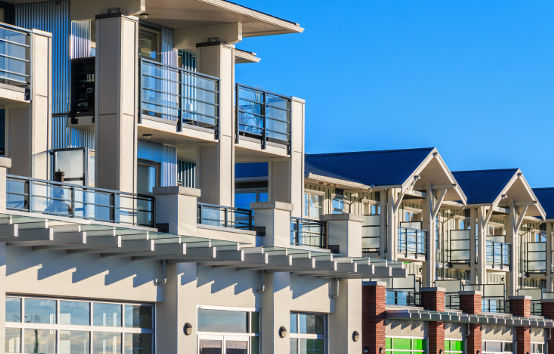
30 Jul, 2014/ by Surveyor Local /News
“We're not just facing a housing shortage any more: it's a full-blown drought.” - That's the view of Shelter's chief executive Campbell Robb, announcing details of the charity's report on the number of affordable homes available in England.
Theses are some of the report's findings:
- in more than half (59%) of local authority areas, less than one in ten available properties are affordable to a couple with children on average wages.
- in more than four fifths (85%) of local authority areas, less than one in ten available properties are affordable to a single person on average wages.
The figures are based on all the residential property advertised on the Zoopla website one day in April.
Only 86 affordable homes in Greater London
Across the whole of Greater London there were only 86 homes with two or more bedrooms which would be affordable to a couple with children. That equates to 0.3% of the total number of homes for sale on that day.
Single buyers fare even less well - there were just 78 homes available (including single-bed properties) which would have met Shelter's affordability threshold, or 0.2% of the total.
Hardly surprisingly there were none at all in the richer central London boroughs but East London boroughs like Tower Hamlets and Newham could only muster one home apiece which might be affordable for a couple with children.
Couples with no children and two incomes have a wider choice but even for them there were no London boroughs with more than 10 affordable homes available.
Picture is almost as bad across the rest of England.
Outside London the position was generally a little better in most areas the numbers available were still vanishingly small when compared with the total.
There were 14 local authority areas outside London which had no properties available which would be affordable for a couple with children.
Across virtually the whole of England fewer than 10% of properties were considered affordable to a single buyer, and the proportion only rises slightly above this in the Yorkshire and the North.
The Shelter report looked at the situation for three categories of buyers : a single person, a couple with no children, and a couple with one or more children. They assumed that a single person would have one average income, a couple with no children would have two average incomes and a couple with children would have one and a half average incomes (i.e. one partner working part-time.)
Definition of affordability based on data published by CML
They then established an ‘affordability threshold' by taking the estimated average income for each household type, and the average advance (82% of property price) and income multiple (3.4 times income) for first-time-buyers from data published by the Council of Mortgage Lenders (CML).
Based on this affordability threshold they then looked at the prices of properties advertised for sale to establish what proportion of homes on the market would be affordable for each household type in each local authority area.
It was assumed that single buyers would be prepared to look at one-bed homes but couples would be looking for a minimum of two bedrooms.
The survey excluded all properties which were clearly not residential, as well as properties only available to retired people and homes being sold with shared-ownership.
Single buyers are worst off
Based on these assumptions the figures showed that couples with no children and two separate incomes are most likely to be able to afford a home.
But single buyers are least likely to find an affordable home, even if they are willing to buy a one-bed property.
However it could be argued that mortgage lenders have recently been more willing to lend higher multiples of income to single people, if it is considered likely that their earnings will rise. So perhaps single buyers might be able to afford more than the report suggests.
Nevertheless the restriction of a single income will always put single buyers at a disadvantage.
Buyers face increased competition for lower-priced properties - and if a seller finds that there is a queue of people wanting to buy then they are likely to put the price up.
Buyers may also find that homes which are advertised at lower prices may have problems of one sort or another - perhaps they are in poor condition or in an inconvenient location, or perhaps there is a problem with the legal title. So buyers could waste time and money looking at a property only to find that it would be difficult to get a mortgage on it.
The report sums up : “This … provides further proof of the extent of our housing crisis. It's not just affecting underemployed households struggling in unstable private lets with poor conditions or young renters unable to save due to high rents; even working families who have managed to save the necessary deposit are finding themselves priced out of the ownership market.”
Cutting such initiatives as the Help-to-Buy schemes, as some politicians have been calling for, will surely only make the position worse.
